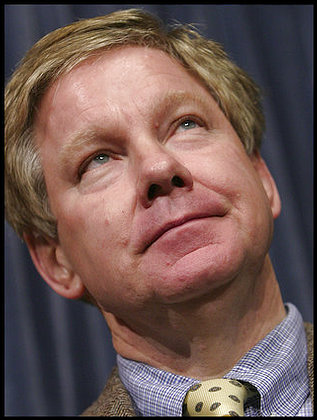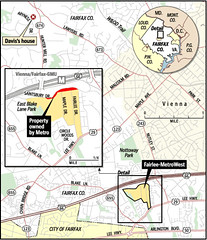National Land Use Planning Comes to the United States or at least Metro Washington
 Congressman Tom Davis probably has more power over DC than the Mayor... Photo by Melina Mara for the Washington Post.
Congressman Tom Davis probably has more power over DC than the Mayor... Photo by Melina Mara for the Washington Post.Last night I had a conversation with a couple and they asked me, "What would you do to rebuild a city like Pittsburgh or Baltimore?"
I often ask myself that question, figuring that working on revitalization in DC is easier, because we have a strong real estate market.
I think the answer is "relative," and requires rebalancing development between the center city and the suburbs. As I have said many many times as an example, Wayne, Oakland, and Macomb counties in Michigan (the tri-county area including the City of Detroit) have only 200,000 more residents today compared to 1960. The difference is that 1 million of these people left Detroit to move out into the suburbs. And these days, as the blog entry on "The Exurbanites" from a couple days ago discussed, people are moving farther and farther out.
The only "solution" in the U.S. is probably urban growth boundaries and a forced refocusing back on the center. In the UK, they have national land use planning, which puts serious controls on sprawl. However, UGBs aren't going to happen any time soon, especially with the growth and vehemence of the property rights movement, and the turnback of urban growth planning in Oregon via Measure 37. More and more sprawl will result. In the interim, traditional center cities must work to improve their competitive position vis-a-vis their suburbs, despite all the financial and other advantages enjoyed by the suburban development model.
However, we are getting a dose of National Federal Planning in the Washington area. Today's papers discuss the welcome proposal from Rep. Tom Davis of Virginia to add funding to Metropolitan Washington's transit system. See "Bill Offering Metro $1.5 Billion Insists On More Oversight, Dedicated Funding" in the Washington Post. But the bill includes special provisions directing WMATA policies about developing particular parcels in Fairfax County, at the Takoma Metro in DC, and at Largo, each put in by various Congressional Representatives. Viola, national planning....
Part of this is directed at a smart growth project in Fairfax County called Metro West. See "Welcome to Fairfax--If You Vote Red," by Post columnist Marc Fisher, and "Commuter Behavior Key to MetroWest", and "Lawmaker Steps In on Va. Growth: Congressman Plans to Block Land Sale Near Vienna Metro," also from the Post.
From the article: "The bill says Metro can have the funds only if it hires an inspector general, who would track the way the agency is managed and spends its money, investigate employee reports of wrongdoing and publicly report the findings. The legislation, a complex proposal that also includes detailed instructions about several Metro land deals pending in Virginia and Maryland, would add two seats to the Metro board of directors for representatives of the federal government. "To get a billion and a half dollars out of my colleagues, they're not going to leave this thing up to the District and the Virginia and Maryland locals," Davis said.
 Graphic from the Washington Post.
Graphic from the Washington Post.



0 Comments:
Post a Comment
<< Home